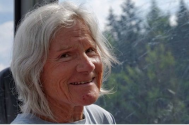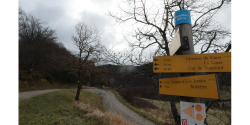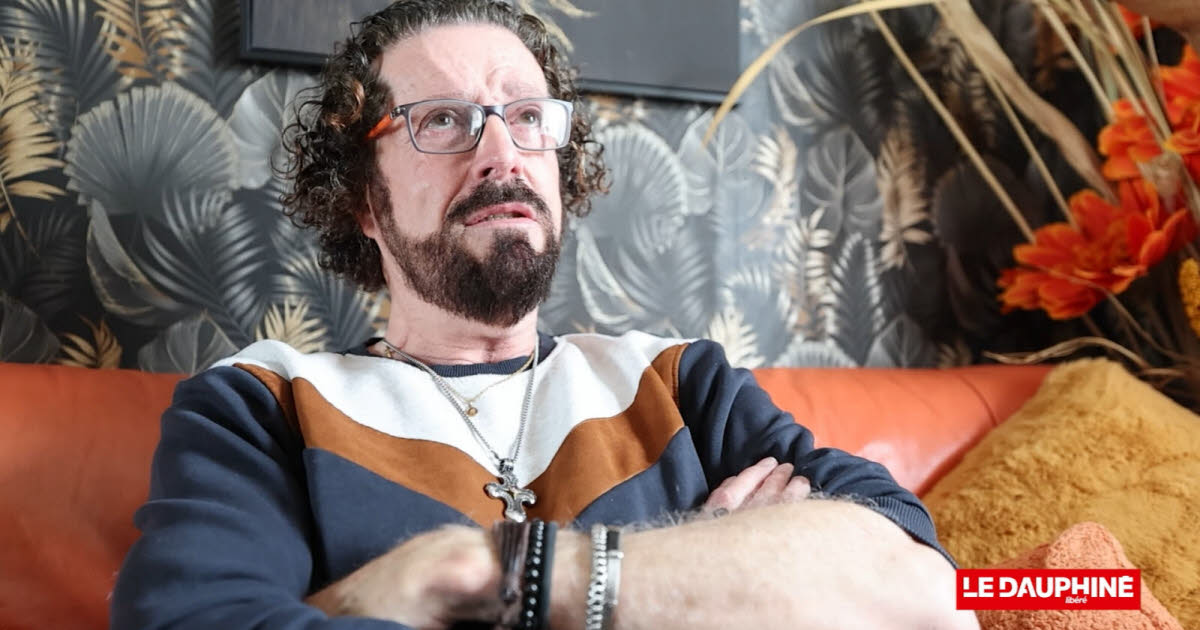I partially updated
@Niner 's list with regards to the possible other victims of Nordahl Lelandais.
The Ariane Cell no longer exists. Their task was to find out if there were links between Nordahl Lelandais and certaind disappearances in the region. The results of their work have never been made public.
Some cases from this list have been transferred to the new Cold Case Pole that has recently been established in France.
One new case has been added to the list as during the Maëlys trial, an anonymous letter was sent the the ARPD, detailing the involvement of Nordahl Lelandais in the disappearance and death of an autisitic man.
The other cases have me wondering if these specific disappearances / deaths have anything to do with NL at all, but regardless of NL's possible involvement, untill they are solved, we will never know. And, at the same time, I also wonder if NL didn't kill more people, I would not be surprised if he had.
Estelle Mouzin, 9, still missing, presumed dead.
Estelle disappeared on
9 January 2003 in Guermantes (Seine-et-Marne), around 6 pm between her house and her school.
NL has been excluded in this case.
Serial killer Michel Fourniret has confessed to the murder of Estelle Mouzin in 2003.
Adlène Kifani, 18, still missing.
He disappeared after making a brief call to 17 [ police help!] number after leaving his family home to meet with his friends & have a drink at a bar in Portes-lès-Valence (Drôme) on
16 April, 2009 only a few dozen meters away from his home.
On Ariane cell list. Outcome unknown.
Rachid Rameche, still missing.
He disappeared in
2009 June 10, in Bassens (Savoie) while he was in a psychiatric institution. He withdrew the amount of his adult disability benefits before he disappeared. He was staying in the same centre that Lucie Roux and Nordahl Lelandais attended between 2012 and 2013.
Rachid was seen and identified in Strasbourg in 2009
after his disappearance. He may be in Belgium where he was fined in 2009 and 2014.
Coralie Moussu, found deceased.
The autopsy of the body of the 32-year-old woman, found in the Rhône in
December, reveals that she did not drown. Coralie Moussu's car, a black Nissan Micra with 2899 YZ 30 registration, car has never been found. The young woman was last seen inside this vehicle on the morning of November 6, 2009 in Vénéjan (Gard).
No link to date with NL.
Nicolas Suppo, 30 years old, still missing.
The technical specialist disappeared on
15 September 2010 near Echirolles during his lunch break. His coworkers saw him at work in the morning. He had neither his identity papers nor his blue card with him. The case was closed without further action in 2014, then reopened at the beginning of the year (2018) by the Grenoble court.
On Ariane cell list. Outcome unknown
.
Adrien Fiorello, still missing.
The 22-year-old student disappeared on
6 October 2010 in Firminy (Loire) while he was on his way to the university in Chambéry (Savoie). The young man's cell phone last pinged in Chambéry (train station) at 5:37 p.m. on October 6, 2010.
On Ariane cell list. Outcome: Nordahl Lelandais was excluded in this case.
Nelly Balmain, still missing.
Nelly Balmain was 29 when she left the family home of Saint-Jean-en-Royans (Drôme) on a scooter, without reappearing. She disappears on
8 August 2011. On 11 January 2018, the Public Prosecutor's Office in Valence reopened the investigation into the disappearance of Nelly Balmain, aged 29, which had been closed in 2015. Her scooter was never found.
On Ariane cell list. Outcome inknown.
Jean-Christophe Morin, 23, still missing.
He disappeared on
9-10 September 2011 during an electro party at Tamié Fort in Albertville (Savoie). The gendarmes only found his backpack.
On Ariane cell list. File moved to the new Cold Case Pole.
Kévin Fauvel, 27, still missing.
On the night of
1-2-3 April 2012, he left the community of Jansiac, located in Châteauneuf-Miravail, in the Jabron Valley. Since then, his family has no news. He was supposed to hitch a ride to his mother's house in Brittany. Ten days later, his father found his identity papers in Jansiac, without any further explanation about this mysterious disappearance.
NL has been ruled out as suspect for this case.
Malik Boutvillain, 32, still missing.
He disappeared
on 6 May 2012 in Echirolles (Isère). He was out jogging. Suffers from schizophrenia.
On Ariane cell list. Outcome unknown.
Hugo Raffi, 18 years old, still missing.
He left home in flip-flops, without a mobile phone and without papers in Albertville (Savoie) on
15, June 2012.
On Ariane cell list. Outcome unknown.
Ahmed Hamadou, 45, partial remains found.
He disappeared in
7-8 September 2012 at Fort Tamié (Savoie). Hamadou was from Le-Pont-de-Beauvoisin, he knew Nordahl Lelandais.
On Ariane cell list. File moved to Cold Case Pole.
Lucie Roux, 43, still missing.
Lucie Roux disappears on
16 September 2012 from the psychiatric centre in Bassens in Chambéry (Savoie). She was treated from 2006 to 2012 at Bassens for depression and had 3 roommates. And it seems that Nordahl Lelandais was followed by the medical-psychological center of Chambéry from 2012 to 2013.
On Ariane cell list. Outcome unknown.
Loïc Guérin, 43, found deceased.
Loïc Guérin, autistic, disappeared from the home where he was living in Sainte-Marie-du-Mont. His remains were found a few days later at the foot af a falaise. In 2022, an anonymous letter, received by the ARPD, accused NL of chasing the handicapped man through the woods with his dogs.
Investigation is ongoing.
Stéphane Chemin, still missing.
33 years old, suffers from schizophrenia, disappeared on 24 September 2012 in Bourg-d' Oisans region (Isère).
On Ariane cell list. Outcome unknown.
Florent Bonnet, 37 years old, still missing.
He disappeared on
18 January 2014 in Bourg-Saint-Maurice (Savoie). He was on a motorcycle and his two-wheeler was found near the Siaix tunnel, with a helmet on it.
Caroline Rivollier, still missing.
29 years old
2014 May, lived in Lyon, had told her roommates that she was leaving
for a few days but she never came back. Her credit card was used in Chambéry three nights in a row.
Eve Monteil, 49 years old, still missing.
She disappeared on
25 August 2014, in Bourg-en-Bresse (Ain).
Lucas Tronche, found deceased.
The then 15 years old, had disappeared on 18 March 2015, at 5.10 pm, from Bagnols-sur-Cèze. Lucas' remains were found off a steep rocky hill near his home in 2022. COD is unknown, an accident is suspected.
NL has been excluded in the disappearance of Lucas.
Monique Thibert, 62, councillor of Hauteville, suddenly disappeared during a hike on
2 June 2015 in the mountains near Crots (Hautes Alpes). Monique was a bit ahead of the group she was part of, and the alert was given very quickly. Despite the deployment of a very vast search operation on a clearly identified territory, she was never found.
NL has been ruled out as suspect in this case.
Nordine Seghiri, 49, found deceased in 2016.
He disappeared on
10 July 2015 from a hospital in Chambéry (Savoie).
Thomas Rauschkolb, found deceased.
Sunday
(December 27, 2015) around 4:50 p.m., the father of an 18-year-old man contacted the gendarmes to report the disappearance of his son. Thomas R.'s body was found the next day, in the river. Grésy-sur-Aix is about 25 minutes north of Chambéry, by car.
On Ariane cell list. Outcome unknown.
Anne-Charlotte Poncin, 30 years old, still missing.
A-C P disappeared on
5 January 2016 in Ambérieu-en-Bugey (Ain). In the morning, she leaves her home on foot to go downtown to look for work, never to be seen again.
On the Ariane cell list? Outcome unknown.
Antoine Zoia, found deceased.
The 16-year-old teenager has not been seen since
1 March 2016. He disappeared in Clarensac, near Nîmes, also in the Gard.
Remains found on 29 September 2018, a few kilometres from the centre of the village in the Gard. Hunter found his body hanging from tree.
No link with NL.
Ilhan Sahingoz, 39 years old missing from Albertville since
11 April 2016.
Olivier Charpe, 59, never returned from a mountain bike ride on
12 August 2016 in Saint-Romans (Isère).
Georgette Amat Chantoux (Georgette Bonnet), found deceased.
She was reported missing in
October 2016, but her phone had not been active since
9 September 2016.
Her remains were found in the mountains in 2022. An accident is the most likely COD
Éric Foray, 47, deceased, partial remains found late 2022.
Éric Foray disappeared on
16 September 2016, from Chatuzange-le-Goubet. He went shopping for lunch and never returned. His vehicle has never been found. Late 2022, part of his cranium was found in the Vercors Massif, not far from the village where he lived.
On Ariane cell list. Outcome unknown.
Family lawyer is of the opinion that there may be a different serial murderer in the area, who is also responsible for the disappearance of Nelly Balmain.
Arthur Noyer, 23 years old, found deceased.
Arthur Noyer disappeared on
11-12 April 2017 in Chambéry.
Nordahl Lelandais was convicted for the young man's murder.
Adrien Mourialmé, 24 years old, found deceased.
He disappeared in
5 July 2017 on the shores of Lake Annecy (Haute-Savoie). His remains were found 9 months later on April 6, 2018 hanging from a tree in Talloires-Montmin. No crime suspected.
Maëlys De Araujo, 9 years old, found deceased.
She disappeared at Pont-de-Beauvoisin in
27 August 2017. Her bones were discovered on February 14 and 15 at the foot of Mont Grêle in Savoie.
Nordahl Leleandais was convicted for the little girl's murder.
BBM







